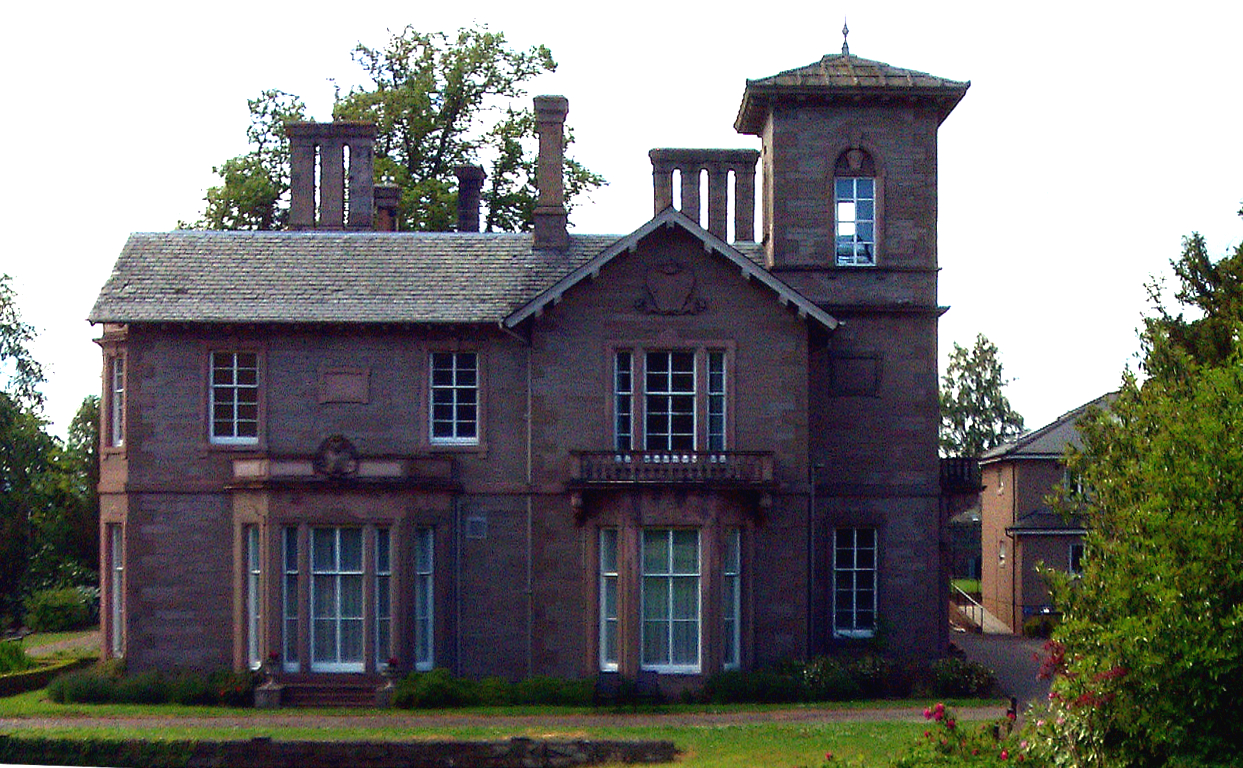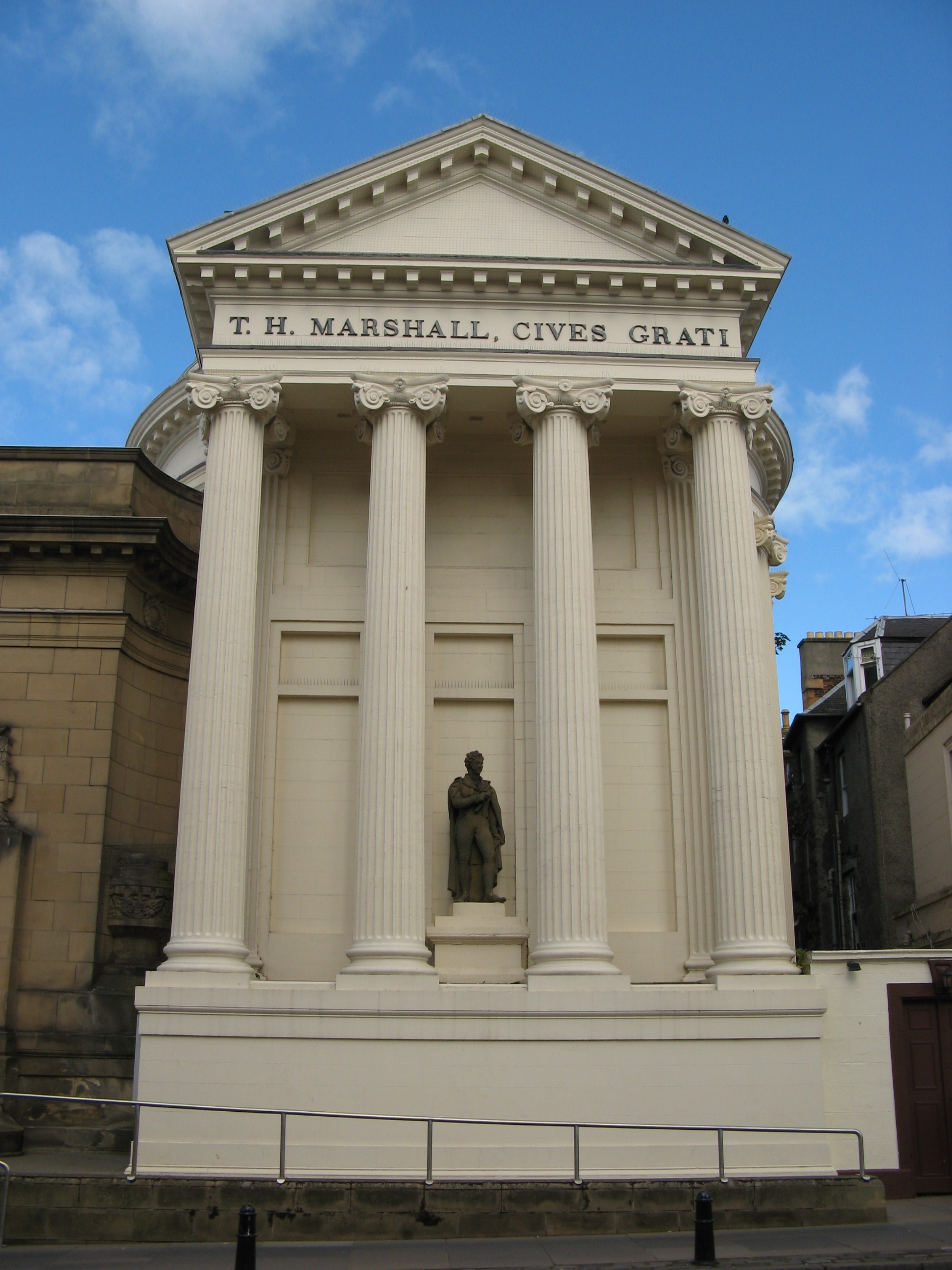|
Bowerswell
Bowerswell is an early 19th-century house in Bowerswell Road, Kinnoull, Scotland. It is a Grade B listed building and was the childhood home of Effie Gray; she and John Ruskin were married there in 1848. After World War II the house and surrounding grounds were purchased by Perth Council as a "living" war memorial; the house and 20 cottages in the grounds serve as sheltered housing. The City of Perth Book of Remembrance for WW2 is housed in the building. Description The house was described in the ''Perth Courier'' of 24 August 1809 as "Lately Built", likely by Perth lord provost Thomas Hay Marshall (who died at the property in July 1808),'' Scots Magazine'' (1808) and had a succession of owners before being sold to George Gray, a lawyer, and future father of Effie Gray, in 1827. It was rented to John Thomas Ruskin (grandfather of the writer John Ruskin) in 1809, but the Ruskin family never owned it. It is described at the time of Effie's childhood as "a Regency villa overlooking ... [...More Info...] [...Related Items...] OR: [Wikipedia] [Google] [Baidu] |
Effie Gray
Euphemia Chalmers Millais, Lady Millais (''née'' Gray; 7 May 1828 – 23 December 1897) was a Scottish artists' model and the wife of Pre-Raphaelite painter John Everett Millais. She had previously been married to the art critic John Ruskin, but she left him with the marriage never having been consummated; it was subsequently annulled. This famous Victorian "love triangle" has been dramatised in plays, films, and an opera. Early life Euphemia Chalmers Gray was born on 7 May 1828 in Perth, Perthshire, Scotland to lawyer and businessman George Gray (1798–1877) and Sophia Margaret (1808–1894), daughter of Andrew Jameson, Sheriff-substitute of Fife.Mervyn Williams (2012) ''Effie'' She grew up at Bowerswell, an Italianate-style house near the foot of Kinnoull Hill. Though she was given the pet-name "Phemy" by her parents as a child, she started to be known as "Effie" by the time she was a teenager. Her sisters Sophie and Alice often modelled for John Everett Millais. Rel ... [...More Info...] [...Related Items...] OR: [Wikipedia] [Google] [Baidu] |
John Ruskin
John Ruskin (8 February 1819 20 January 1900) was an English writer, philosopher, art critic and polymath of the Victorian era. He wrote on subjects as varied as geology, architecture, myth, ornithology, literature, education, botany and political economy. Ruskin's writing styles and literary forms were equally varied. He wrote essays and treatises, poetry and lectures, travel guides and manuals, letters and even a fairy tale. He also made detailed sketches and paintings of rocks, plants, birds, landscapes, architectural structures and ornamentation. The elaborate style that characterised his earliest writing on art gave way in time to plainer language designed to communicate his ideas more effectively. In all of his writing, he emphasised the connections between nature, art and society. Ruskin was hugely influential in the latter half of the 19th century and up to the First World War. After a period of relative decline, his reputation has steadily improved since the 196 ... [...More Info...] [...Related Items...] OR: [Wikipedia] [Google] [Baidu] |
Thomas Hay Marshall
Thomas Hay Marshall (1770 – 15 July 1808) was twice lord provost of Perth, Scotland. With a passion for Georgian architecture,Provost Thomas Hay Marshall (1768–1808) – ArtUK.org Marshall is credited with building Perth's "new town" to the north and south of the city centre."Anniversary of man who shaped Perth but died penniless" – '' Daily Record'', 11 July 2008 Marshall was involved in the founding of |
Kinnoull
Kinnoull is a parish in Perth, Perth and Kinross, Scotland, approximately half a mile northeast of Perth city centre. Beginning at the level of the River Tay, Kinnoull's terrain continues to rise as it continues southeast, culminating in Kinnoull Hill, the summit of which is at . The main access roads to Kinnoull from the centre of Perth are Strathmore Street (the A94) and Muirhall Road, both in Bridgend. Architecture Although the area is largely residential, Kinnoull is also the home of St Mary's Monastery, which was established in 1869 as the first Roman Catholic monastery to be built in Scotland since the Reformation. Gannochy The Robert Matthew Mitchell-designed Gannochy Housing Estate part of Kinnoull was founded by Arthur Kinmond Bell in 1922, when he purchased a large plot of land. At its lower western end, a portion of ground was left for recreational purposes. A duck pond, tennis court and curling pond were constructed adjacent to the Kinnoull Recreation Grounds ... [...More Info...] [...Related Items...] OR: [Wikipedia] [Google] [Baidu] |
Listed Building
In the United Kingdom, a listed building or listed structure is one that has been placed on one of the four statutory lists maintained by Historic England in England, Historic Environment Scotland in Scotland, in Wales, and the Northern Ireland Environment Agency in Northern Ireland. The term has also been used in the Republic of Ireland, where buildings are protected under the Planning and Development Act 2000. The statutory term in Ireland is "protected structure". A listed building may not be demolished, extended, or altered without special permission from the local planning authority, which typically consults the relevant central government agency, particularly for significant alterations to the more notable listed buildings. In England and Wales, a national amenity society must be notified of any work to a listed building which involves any element of demolition. Exemption from secular listed building control is provided for some buildings in current use for worsh ... [...More Info...] [...Related Items...] OR: [Wikipedia] [Google] [Baidu] |
World War II
World War II or the Second World War, often abbreviated as WWII or WW2, was a world war that lasted from 1939 to 1945. It involved the World War II by country, vast majority of the world's countries—including all of the great powers—forming two opposing military alliances: the Allies of World War II, Allies and the Axis powers. World War II was a total war that directly involved more than 100 million Military personnel, personnel from more than 30 countries. The major participants in the war threw their entire economic, industrial, and scientific capabilities behind the war effort, blurring the distinction between civilian and military resources. Air warfare of World War II, Aircraft played a major role in the conflict, enabling the strategic bombing of population centres and deploying the Atomic bombings of Hiroshima and Nagasaki, only two nuclear weapons ever used in war. World War II was by far the List of wars by death toll, deadliest conflict in hu ... [...More Info...] [...Related Items...] OR: [Wikipedia] [Google] [Baidu] |
Scots Magazine
''The Scots Magazine'' is a magazine containing articles on subjects of Scottish interest. It claims to be the oldest magazine in the world still in publication, although there have been several gaps in its publication history. It has reported on events from the defeat of the Jacobites through the Napoleonic wars to the Second World War and on to the creation of the new Scottish Parliament. History ''The Scots Magazine'' was originally published in January 1739. It was intended as a rival to the London-based '' Gentleman's Magazine'', in order that "our countrymen might have the production of every month sooner, cheaper and better collected than before". Its first issue, dated Monday 9 February 1739, cost 6d. and appeared in a blue cover with the motto ''Ne quid falsi dicere audeat, ne quid veri non audeat''. Popular through the 18th century, it innovated a register of births, marriages and deaths, which other journals soon copied. From 1759 until 1765 it was edited by William S ... [...More Info...] [...Related Items...] OR: [Wikipedia] [Google] [Baidu] |
Regency Era
The Regency era of British history officially spanned the years 1811 to 1820, though the term is commonly applied to the longer period between and 1837. King George III succumbed to mental illness in late 1810 and, by the Regency Act 1811, his eldest son George, Prince of Wales, was appointed prince regent to discharge royal functions. When George III died in 1820, the Prince Regent succeeded him as George IV. In terms of periodisation, the longer timespan is roughly the final third of the Georgian era (1714–1837), encompassing the last 25 years or so of George III's reign, including the official Regency, and the complete reigns of both George IV and his brother William IV. It ends with the accession of Queen Victoria in June 1837 and is followed by the Victorian era (1837–1901). Although the Regency era is remembered as a time of refinement and culture, that was the preserve of the wealthy few, especially those in the Prince Regent's own social circle. For the mass ... [...More Info...] [...Related Items...] OR: [Wikipedia] [Google] [Baidu] |
Buildings Of Scotland
A building, or edifice, is an enclosed structure with a roof and walls standing more or less permanently in one place, such as a house or factory (although there's also portable buildings). Buildings come in a variety of sizes, shapes, and functions, and have been adapted throughout history for a wide number of factors, from building materials available, to weather conditions, land prices, ground conditions, specific uses, prestige, and aesthetic reasons. To better understand the term ''building'' compare the list of nonbuilding structures. Buildings serve several societal needs – primarily as shelter from weather, security, living space, privacy, to store belongings, and to comfortably live and work. A building as a shelter represents a physical division of the human habitat (a place of comfort and safety) and the ''outside'' (a place that at times may be harsh and harmful). Ever since the first cave paintings, buildings have also become objects or canvasses of much artisti ... [...More Info...] [...Related Items...] OR: [Wikipedia] [Google] [Baidu] |
Historic Environment Scotland
Historic Environment Scotland (HES) ( gd, Àrainneachd Eachdraidheil Alba) is an executive non-departmental public body responsible for investigating, caring for and promoting Scotland's historic environment. HES was formed in 2015 from the merger of government agency Historic Scotland with the Royal Commission on the Ancient and Historical Monuments of Scotland (RCAHMS). Among other duties, Historic Environment Scotland maintains more than 300 properties of national importance including Edinburgh Castle, Skara Brae and Fort George. History The responsibilities of HES were formerly split between Historic Scotland, a government agency responsible for properties of national importance, and the Royal Commission on the Ancient and Historical Monuments of Scotland (RCAHMS), which collected and managed records about Scotland's historic environment. Under the terms of a Bill of the Scottish Parliament published on 3 March 2014, the pair were dissolved and their functions transferr ... [...More Info...] [...Related Items...] OR: [Wikipedia] [Google] [Baidu] |







